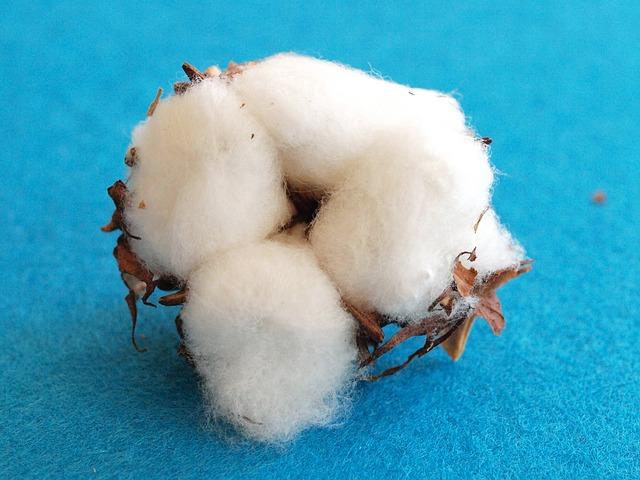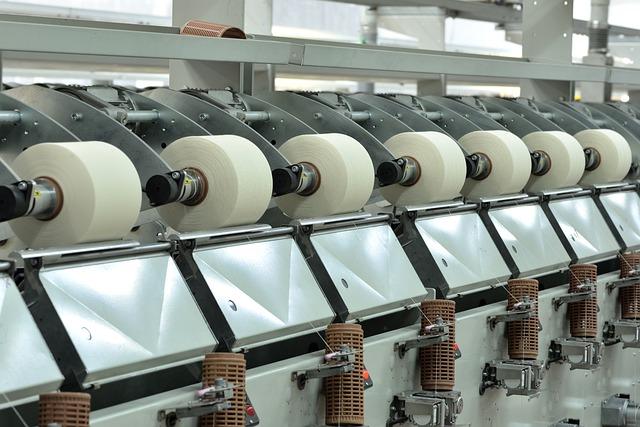As international markets more and more prioritize sustainability, Mali, Africa’s main cotton manufacturer, is taking essential strides to align its agricultural practices with new Eu union rules. The cotton business, important to Mali’s financial system and employment, is now at a crossroads, going through the twin problem of assembly rising shopper call for for environmentally type merchandise whilst navigating complicated global requirements. To be able to bolster its place within the international marketplace, Mali is imposing a inexperienced push that goals to reinforce manufacturing strategies and cut back the environmental have an effect on of cotton farming. This newsletter delves into how mali is adapting to the EU’s stringent necessities, the results for native farmers, and the possible advantages for Mali’s financial system in a aggressive, sustainability-oriented panorama.
Mali’s Cotton Trade: An Assessment of Manufacturing and Financial Have an effect on
Mali stands as Africa’s main cotton manufacturer, contributing considerably to each native and nationwide economies. This important money crop no longer simplest supplies employment to tens of millions of farmers but additionally performs a the most important function in Mali’s business stability. Roughly 50% of the rustic’s agricultural group of workers is engaged in cotton cultivation, wich has made it a spine of rural communities. The cotton sector without delay contributes to Mali’s GDP and is a big supply of foreign currency profits,serving to to stabilize the financial system amidst exterior shocks and fluctuating international markets. Moreover, the federal government’s enhance thru incentive methods and infrastructure investments has additional enhanced the business’s productiveness and sustainability.
The expanding international call for for sustainably produced textiles has brought on mali to include environmentally pleasant practices in its cotton business. In mild of latest Eu Union rules geared toward selling greener agricultural practices, Mali seeks to conform via imposing lasting farming tactics and lowering environmental affects. Projects come with using natural fertilizers, integrated pest management, and accountable water utilization, which no longer simplest give protection to the ecosystem but additionally reinforce the high quality of cotton produced. As Mali prepares for those upcoming regulatory adjustments, it stands at the vanguard of a inexperienced revolution that would reshape its cotton business, making sure it stays aggressive in global markets whilst safeguarding its environmental legacy.
| Key Details about Mali’s Cotton Trade | Statistics |
|---|---|
| Share of Inhabitants Engaged in Cotton Farming | 50% |
| Contribution to GDP | ~3% |
| Annual Cotton Manufacturing (in heaps) | ~800,000 |
| Export Markets | EU, USA, Asia |
EU Rules on Sustainability: What They Imply for Mali’s Cotton Sector

The Eu Union’s contemporary rules geared toward bettering sustainability throughout its provide chains are set to have profound implications for Mali’s cotton sector, which stands as one in all Africa’s main manufacturers. Taking into consideration those adjustments, Mali should align its agricultural practices with the EU’s environmentally mindful framework, which emphasizes lowering carbon footprints and selling moral sourcing. This shift is predicted to surround quite a lot of aspects of manufacturing, together with:
- Water Control: Imposing effective irrigation tactics to verify sustainable water use.
- Soil Well being: Selling natural farming practices to reinforce soil high quality and biodiversity.
- Crop Variety: Encouraging the cultivation of more than one vegetation along cotton to toughen resilience in opposition to local weather exchange.
Because the EU makes a speciality of tracing the origins of uncooked fabrics to verify compliance with its Inexperienced Deal, Mali should spend money on trendy farming applied sciences and coaching methods for native farmers. This funding no longer simplest aligns with the brand new rules however too can reclaim marketplace competitiveness. Moreover, collaborations with global companions might foster get admission to to sustainable farming practices and bolster Mali’s cotton sector with the most recent inventions. Under is a abstract of doable advantages for Mali’s cotton business because it pivots in opposition to sustainability:
| Receive advantages | Description |
|---|---|
| Get right of entry to to New Markets | Adhering to EU requirements may open doorways to extra profitable export alternatives. |
| Enhanced Recognition | Turning into a sustainable manufacturer can toughen Mali’s symbol at the international level. |
| Lengthy-term Resilience | Sustainable practices can result in extra strong yields through the years, supporting native economies. |
The Position of Environmental Practices in Bettering Cotton High quality and Marketability

The combination of sustainable farming practices is changing into more and more important within the cotton business, significantly for countries like Mali, which is striving to care for its standing as africa’s main cotton manufacturer. By means of adopting eco-friendly methods, cotton growers can considerably toughen the standard in their yields whilst making sure compliance with evolving global rules, similar to the ones set via the Eu Union. Those practices no longer simplest cut back the environmental footprint of cotton cultivation but additionally reinforce the fibers’ purity and energy, qualities which might be very important for attracting top rate costs within the international marketplace.
Imposing sustainable methods similar to natural farming, crop rotation, and built-in pest control can yield more than one advantages:
- Enhanced Soil Well being: sustainable strategies toughen soil fertility and cut back erosion, main to higher crop yields.
- Water Conservation: Eco-friendly irrigation tactics preserve water, a crucial useful resource in cotton farming.
- Pest Resistance: Herbal pest keep an eye on reduces reliance on damaging chemical compounds, generating cleaner cotton.
- Marketplace Attraction: Cotton produced thru inexperienced strategies is more and more in call for amongst environmentally mindful shoppers.
| Apply | Receive advantages |
|---|---|
| Natural farming | Advanced fiber high quality |
| Crop Rotation | Greater soil fertility |
| built-in Pest Control | Decreased pesticide use |
| Water-efficient Irrigation | Conserves water sources |
Demanding situations Confronted via Mali’s Cotton Farmers in Adapting to Inexperienced Projects

The shift in opposition to inexperienced tasks poses important demanding situations for Mali’s cotton farmers, who’ve lengthy depended on typical farming practices. The advent of stricter environmental rules from the Eu Union would require farmers to conform their methodologies, which incessantly war with conventional approaches. Key hurdles come with:
- Schooling and Coaching: Farmers want complete enhance and coaching to know sustainable practices and their advantages.
- Get right of entry to to Sources: Natural seeds and eco-friendly pest keep an eye on choices are incessantly no longer readily to be had or inexpensive.
- Monetary Constraints: The preliminary funding for inexperienced farming apparatus and practices might exceed the present funds functions of many farmers.
Additionally, the commercial pressures confronted within the aggressive international cotton marketplace make transitioning to sustainable strategies difficult.Farmers are apprehensive that whilst pursuing inexperienced tasks, they will face:
- Decreased Yields: There are considerations that natural farming may result in decrease manufacturing ranges to start with.
- Marketplace Get right of entry to: The facility to promote green-certified cotton at aggressive costs is unsure.
- Political Steadiness: Ongoing political tensions within the area can complicate efforts to put in force and maintain those inexperienced tasks.
Methods for Transitioning to Sustainable cotton Manufacturing in Mali

The transition to sustainable cotton manufacturing in Mali calls for a multifaceted technique to meet the environmental requirements set via the EU whilst keeping up productiveness and profitability. Key methods come with:
- Imposing Agroecological Practices: The usage of crop rotation, intercropping, and natural fertilizers can reinforce soil well being and cut back dependency on chemical inputs.
- Making an investment in Irrigation and Water Control: Environment friendly irrigation techniques, similar to drip or sprinkler irrigation, can optimize water use in cotton farming.
- Bettering Farmer Coaching Techniques: Schooling tasks that specialize in sustainable farming tactics can empower farmers to undertake eco-friendly practices.
- Encouraging Cooperative Fashions: Forming cooperatives can toughen get admission to to sources and markets whilst making an allowance for shared wisdom and reviews amongst farmers.
Moreover, collaboration amongst stakeholders—together with executive businesses, NGOs, and global organizations—is the most important to foster an atmosphere conducive to sustainable practices. A proposed framework for those collaborative efforts may come with:
| Stakeholder | Position | Doable Contributions |
|---|---|---|
| Executive | Coverage-making and legislation | Incentives for sustainable farming |
| NGOs | Schooling and sources | Coaching methods and investment |
| Farmers | Implementation | Adoption of sustainable practices |
| exporters | Marketplace get admission to | Facilitating connections to EU markets |
Long run Potentialities for Mali’s Cotton Trade Amidst Converting World Requirements

The way forward for mali’s cotton business is poised for exchange because it adapts to evolving international requirements and a rising call for for sustainable practices.As main markets just like the Eu Union put in force stricter rules on environmental affects and sustainable sourcing, Mali is primed to put itself as a pace-setter in eco-friendly cotton manufacturing.The country is that specialize in tasks that emphasize each high quality and sustainability,which might reinforce its aggressive edge in global markets. Key methods come with:
- Funding in Sustainable Farming Tactics: Selling natural farming how to cut back chemical utilization.
- Certification Techniques: Acquiring certifications similar to Honest Industry or World Natural Textile Usual (GOTS) to enchantment to mindful shoppers.
- Executive Strengthen: Encouraging insurance policies that supply monetary support and coaching for farmers to undertake sustainable practices.
Additionally, Mali’s dedication to bettering its cotton sector coincides with a broader shift in opposition to sustainability in international provide chains. As provide chain openness turns into paramount, Mali’s cotton growers are anticipated to reinforce traceability and provenance of their merchandise. This shift no longer simplest meets the calls for of global patrons but additionally aligns with international sustainability targets. The desk beneath summarizes Mali’s benefits as opposed to the demanding situations it’ll face:
| Benefits | Demanding situations |
|---|---|
| Wealthy soil and appropriate local weather for top quality cotton manufacturing | Restricted get admission to to complicated agricultural era |
| Rising international call for for natural and sustainably sourced merchandise | Doable marketplace volatility because of converting rules |
| Strengthen from global ngos for sustainable practices | Resistance to switch amongst conventional farming communities |
Insights and Conclusions
As Mali positions itself to navigate the evolving panorama of Eu Union rules geared toward selling sustainable agriculture, the rustic’s standing as Africa’s main cotton manufacturer is at a pivotal crossroads. The initiative no longer simplest underscores Mali’s dedication to environmentally pleasant practices but additionally highlights the wider implications for the cotton business throughout West Africa. As Mali prepares to undertake and put in force those new inexperienced requirements, the following steps will play a the most important function in shaping its financial long term and making sure its cotton sector stays aggressive within the international market. With the EU’s stringent regulations on sustainability in thoughts, stakeholders inside of Mali’s cotton business will want to stability the calls for of global markets with the realities of native manufacturing demanding situations.As Mali embarks in this inexperienced transition, its adventure will function a very important case learn about for different african countries striving to align agricultural practices with international sustainability targets. The consequences of those adjustments will resonate past Mali’s borders, possibly influencing insurance policies and practices around the continent.
Source link : https://afric.news/2025/03/08/mali-africas-top-cotton-grower-readies-for-eu-rules-with-green-push-bloomberg/
Creator : Victoria Jones
Submit date : 2025-03-08 13:03:00
Copyright for syndicated content material belongs to the connected Source.



